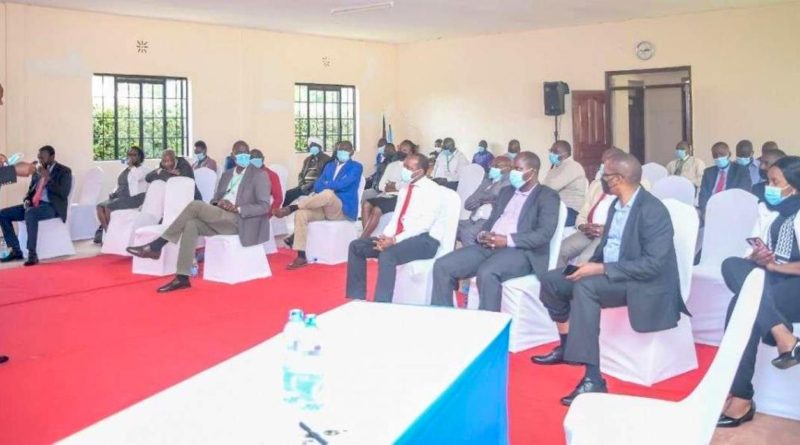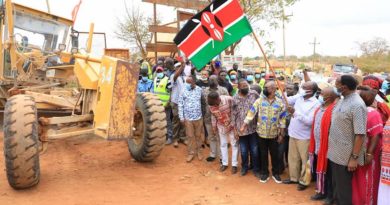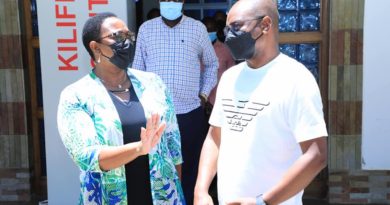A Glance into Laikipia 2030
From laikipia.go.ke
Governor Ndiritu Muriithi’s diary had the signing of the Laikipia Appropriation Bill slated for 11 am as the main activity of the day. Top management of the Executive, Members and officials of the County Assembly and a number of citizens had been invited to witness the signing of the bill into law.
But as fate would have it, the printers would not work with the expected speed on that day. At exactly 11 am, Governor Muriithi briskly walked to the venue with the waiting guests. Among those in the room was county assembly clerk Jasper Mutuiri, MCAs Stephen Kagondu, Daniel Mugweru, Roberto Maina, DG John Mwaniki, County Secretary, CECMs and top managers of the county, Sosian Concrete director Henry Machira, Francis Thuti, Gachara among others.
To fill the void, the Governor decided to engage the guests with a simple question, What would Laikipia of 2030 look like?
It’s a question that transcends political, religious or social affiliation. It is a question that should guide political debates locally and nationally. The hour saw the participants brainstorm on this question which should ordinarily define the agenda for the next nine years to Kenya Vision 2030 as governor Muriithi moderated.
I would like to see Umande ward being the food basket for Laikipia. We need more dams and dam liners to attain this.
Mr Mugweru, Umande ward representative said. According to Agriculture CECM Ms Wangari Wachira, a Laikipia of 2030 should have people with increased access to water leading to increased production as well as manufacturing and processing. I would like to see every dam converted for water-for-production with the county being a food basket.
she said.
There was a general consensus that many of Laikipia towns and urban centres should be manufacturing centres. They named Nanyuki, Nyahururu, Rumuruti, Naibor, Ol Moran, Matanya, Mowarak, Mutara/Check Point, Wiyumiririe, Castle, Sipili, Kinamba, Doldol, Luoniek and Suguta Marmar. They proposed that the government invest Kshs. 40 million in at least four market centres in every ward to be upgraded into smart town and connect urban centres with good roads to attract production. Urbanization is critical to the growth of the economy and creates a market for agricultural produce. So what’s needed to turn Laikipia centres into production towns?
Mining would be key to transforming the towns into vibrant production centres. Centres like Mowarak, Naibor, Kimanjo is literally sitting on mineral deposits according to a survey carried out by the government in 2020. Participants also named expansion of businesses operating in the towns by incentivizing them with cheaper energy. The cost of electricity in Kenya is more than double that of a country like China. In its growth strategy, Laikipia targets to increase its wealth four-fold in the medium term by among other things increasing water-for-production, exploitation of its mineral resources and performing fully its functions in line with Schedule Four of the Constitution of Kenya. Electricity reticulation falls under such functions. Other ideas included having Laikipia’s 10 vocational training centres focus on production-based curriculum, expansion of Export Processing Zone (EPZ) in Marmanet to cover more areas.
According to a resident Mr Henry Machira, the government should make a deliberate effort to support agricultural production for export especially to be in compliance with the set minimum resident levels. It should also invest about Kshs. 100 million per year in extension services.
What will Laikipia Health Service look like in 2030? According to Dr Josephine Ohas of Laikipia Health Service, there will be increased access to healthcare with all the 150,000 households on health insurance and support for indigents. Currently, 63 per cent of the households in Laikipia are on NHIF cover. To realize this, the health sector will require an investment of the Ksh. 3bn in the next five years. Mr. Francis Thuti, an environmentalist expects Laikipia people to focus firmly on fruit diets by 2030 to reduce the heavy burden of lifestyle and non-communicable diseases such as diabetes and cancer. It was a conversation that ate up half of the lunchtime hour. It ended with a firm consensus:
There should be a deeper dive into this question.




